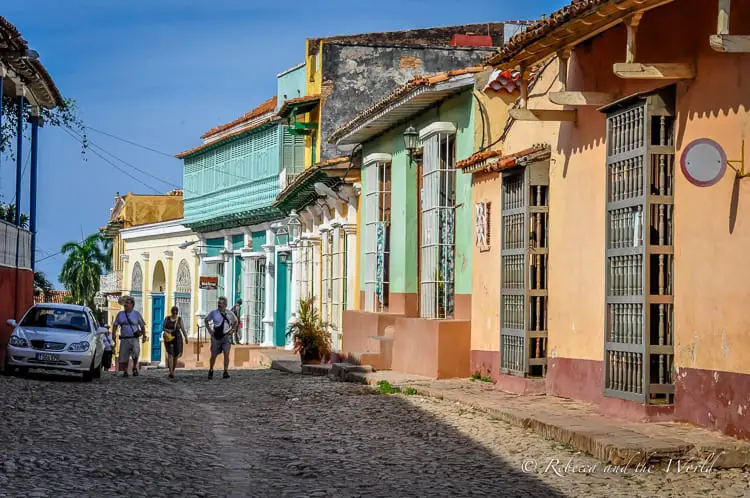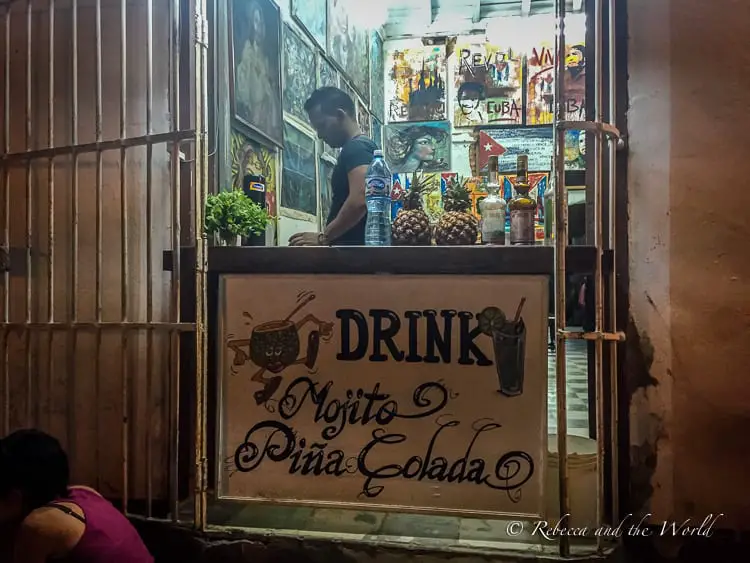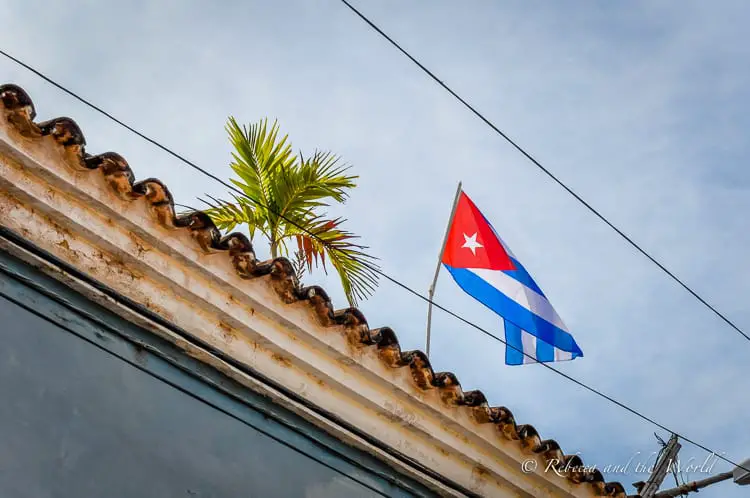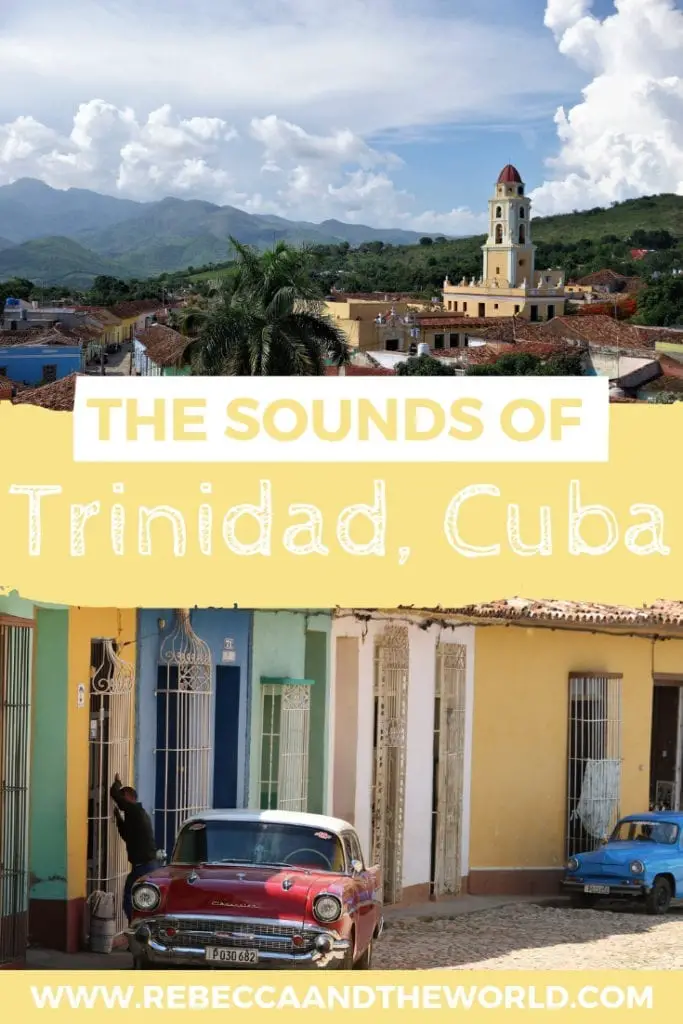“Pepino!” A sing-song voice calls from the street below. “Pepino!”
“Pepino!” a woman responds.
Looking over the edge of the balcony, I see a man, shirt unbuttoned to the waist, push his squeaky wheelbarrow over to her doorway. Money is exchanged and the woman takes her fresh cucumbers inside.
Later comes the slow clop of shod hooves on cobblestones, as horses draw carts filled with vegetables, or water pumps, or paint cans. Then a man selling peanuts, another selling bread and, in the afternoon, a man pushing a cart filled with servings of flan.
These are the sounds of Trinidad, a city seemingly constantly full of noise.
We’d arrived here on a bus from Cienfuegos, after a few days in Havana, and the first sounds were of men and women shouting and pointing to signs in their hands advertising their casas particulares.
Having had the foresight to organise a ride before we arrived, we slip through the crowd and into the waiting bicycle taxi. We watch the driver’s sweat-stained back as his stocky legs push the bike over the cobblestones and toward our casa particular.
Trinidad is full of tourists, and it’s easy to understand the allure of this UNESCO World Heritage Site. Colourful houses line narrow streets, and the iconic lemon-yellow bell tower of the Museo Nacional de la Lucha Contra Bandidos stands tall in the Plaza Mayor.
On our first day, around 6am, a man calling out his wares for sale wakes us abruptly. This morning its razors, soon followed by tomatoes. As more people start to rise and more vendors stalk the streets, it’s clear that there will be no sleep-ins in this city.
The owners of our casa particular set out a substantial breakfast of bread and honey, fresh local fruit, scrambled eggs and tea and coffee.
We hire bikes and pedal through the baking sun to Playa Ancón, about 13 kilometres from Trinidad. Along the way, we pass small, rocky alcoves, the Caribbean Sea glimmering through the palm trees.
Arriving at the beach, we pay a man to keep an eye on our bicycles, and set ourselves down on the sand under a thatched umbrella. A man comes by to see if we want to order anything, and returns with strong mojitos, the bottom of the glasses coated with a thick layer of sugar that won’t dissolve.
That afternoon, once the sun starts to sink and the heat fades, we wander through around the Plaza Mayor. Music trickles out from the open doors of bars, and crowds fill the steps alongside the church as they listen to a band playing jazz outdoors.
The next day we meet up with a guide at the Maqueta de Trinidad, which houses a scale model of the city. For CUC$5 (around US$5) Carlos shows us around the city for two hours, sharing with us its history and pointing out important buildings. We start in Casa Frias, heading to the rooftop for an incredible view over the entire city.
Trinidad has an interesting story of slavery and smugglers, but really came into its own in the early 19th century when it became a hub for Cuba’s sugar industry. With that came enormous wealth and the city built many beautiful buildings and houses.
The sugar industry later crashed, and with it went the city’s importance. However, because construction reduced dramatically following the crash, the city’s buildings remained mostly in their original condition. In the 1950s a preservation law was passed, and in in 1988 it became a UNESCO World Heritage Site due to its historical value.
On our final night, a lengthy procession passes through the Plaza Mayor to celebrate Semana Santa (Holy Week). Hundreds of people carry statues of religious figures through the streets and the low, mellow buzz of trumpets echoes off buildings.
All too soon, we have to leave. The last sounds we hear are the barks of the dogs that chase after our bus as it lurches out of the city toward Havana.
















I went to Cuba 5 years ago now, and I followed roughly the same trek. Reading this has made me remember so much about my time in Trinidad in particular that I hadn’t thought about. Maybe I should write about it.
You should definitely write about it! I really liked Trinidad.
What a fun post! I really got to vicariously live the experience and hear the sounds of beautiful Trinidad. Absolutely can’t wait to visit this marvelous, colorful country.